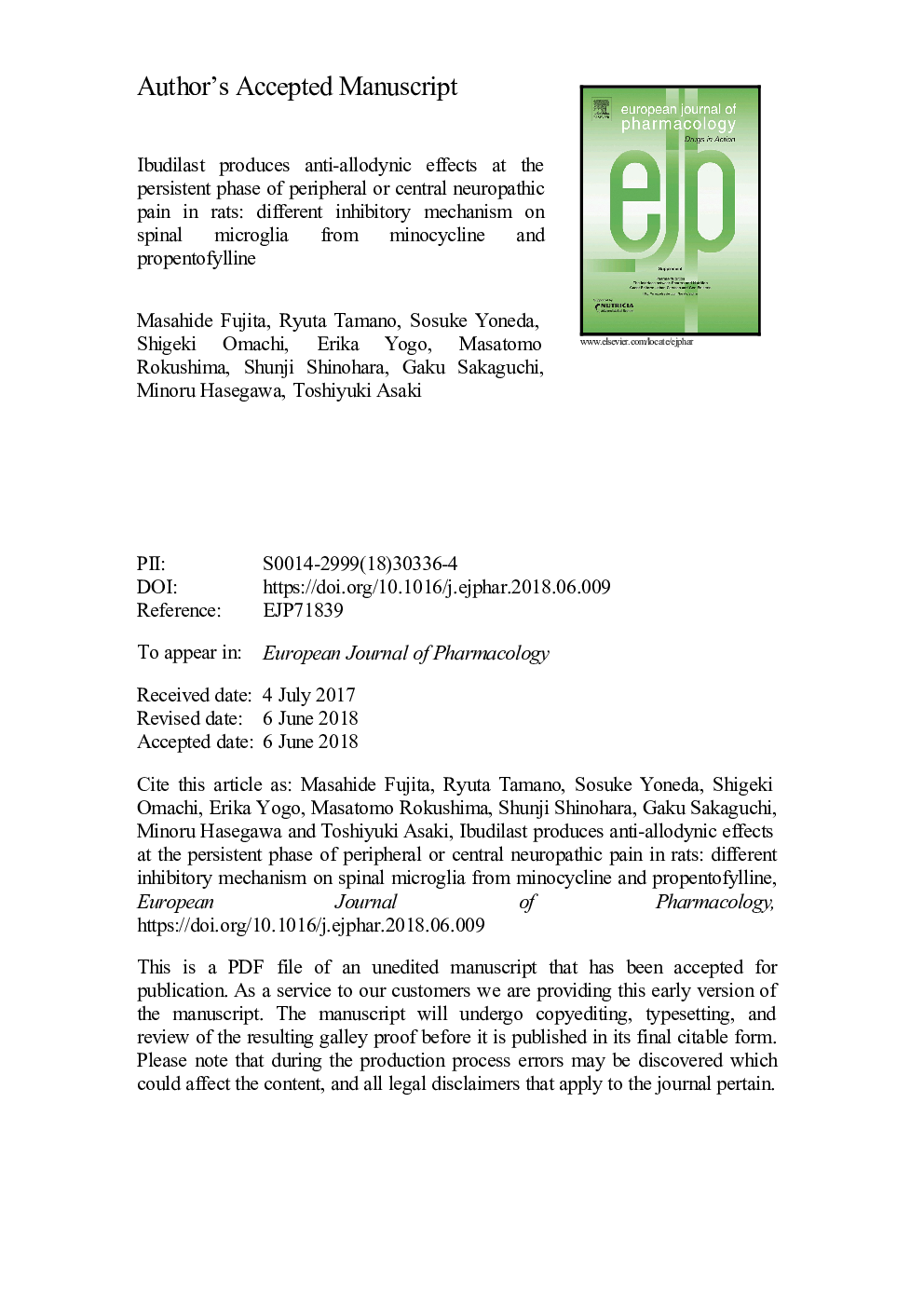| Article ID | Journal | Published Year | Pages | File Type |
|---|---|---|---|---|
| 8528960 | European Journal of Pharmacology | 2018 | 65 Pages |
Abstract
Microglia exhibit various activation phenotypes in the spinal cord after peripheral nerve injury, and promote neuropathic pain. Ibudilast is a phosphodiesterase inhibitor with anti-inflammatory activity, but its effect on activated microglia in chronic neuropathic pain is poorly understood. We investigated whether ibudilast was effective on established allodynia associated with activated microglial phenotypes in two rat models of peripheral and central neuropathic pain. A single intrathecal injection of ibudilast (25â¯Î¼g) inhibited established allodynia on days 7-21 after sciatic nerve injury in rats. Repeated injections of ibudilast (25â¯Î¼g/day) reduced the numbers of phosphorylated p38-positive cells without changing hypertrophic microglia, whereas minocycline (100â¯Î¼g/day) decreased the numbers of hypertrophic microglia associated with phosphorylated p38 levels in the spinal cord. Gene analysis revealed that minocycline, but not ibudilast, increased the expression of anti-inflammatory cytokine genes Il10 and Tgfβ1 in the spinal cord. Propentofylline (100â¯Î¼g/day) was less effective on microglial phenotypes and established allodynia. Ibudilast inhibited persistent allodynia after the recovery of motor deficits in experimental autoimmune encephalomyelitis rats. Therefore, ibudilast might be effective for chronic neuropathic pain after peripheral and central nerve damage. Ibudilast mediated these effects on activated microglia using a different mechanism compared with minocycline and propentofylline.
Keywords
Related Topics
Life Sciences
Neuroscience
Cellular and Molecular Neuroscience
Authors
Masahide Fujita, Ryuta Tamano, Sosuke Yoneda, Shigeki Omachi, Erika Yogo, Masatomo Rokushima, Shunji Shinohara, Gaku Sakaguchi, Minoru Hasegawa, Toshiyuki Asaki,
